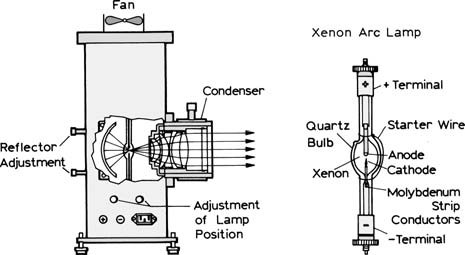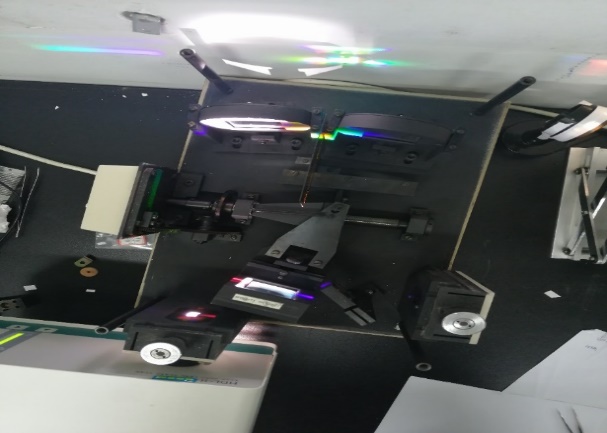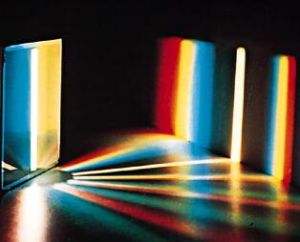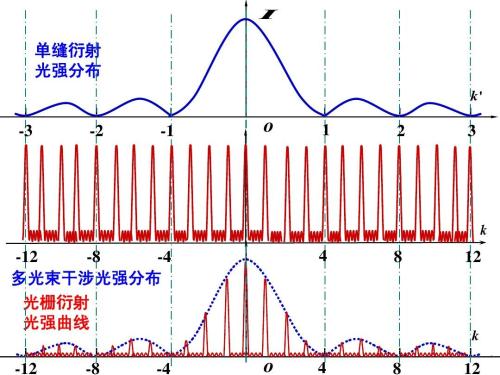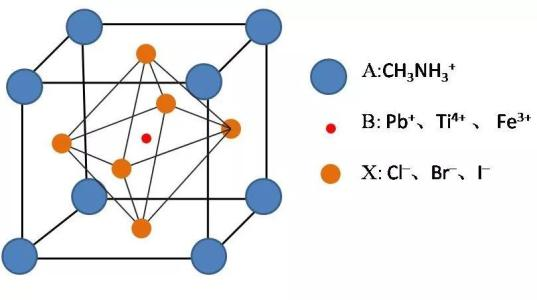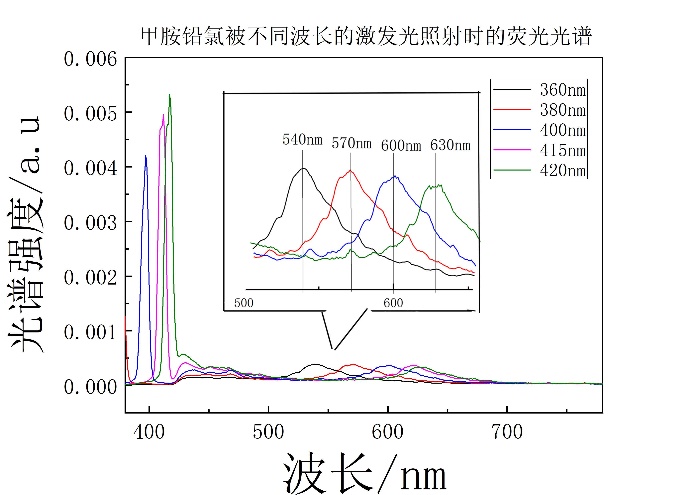23倍频光产生规律及机理初步探索毕业论文
2020-04-23 20:07:51
摘 要
光谱分析在现代科学研究中有着非常重要的作用,它是一种利用物质组成元素的特征谱线对物质进行研究的一种方法。实验中,通常会使用单色仪来获得单色光,大多数单色仪中使用闪耀光栅作为分光器件,根据光栅的分光原理,在得到的光谱图中会存在光栅倍频峰的干扰,其中以二倍频最为常见。
一些性能优异的单色仪使用双光栅来避免倍频峰的干扰,而对于单光栅的单色仪而言,在使用时,通常会避开单色仪设定波长的二倍频范围,即使无法避免,研究者也能根据二倍频波峰和激发光波长的倍率关系轻易的将其识别。
光栅倍频的倍频峰处于高级次衍射光谱上,因此强度通常较小,然而,我们在实验中偶然发现了2/3倍频峰,在某些条件下,2/3倍频峰的强度甚至会大于样品的激发峰,并且,当我们在单色仪出射口安装一个单色仪设定波长的截止片后,依旧能够观察到该倍频峰。
在本次课题研究中,我们使用甲胺铅溴(CH3NH3PbBr3)和甲胺铅氯(CH3NH3PbCl3)作为样品、氙光灯和激光作为光源,首先对2/3倍频光对光源和样品的依赖性进行研究,并通过对实验结果的分析发现,只有当光源为复色光时,才能观察到2/3倍频现象。在此基础上,我们又分别使用摄像机拍摄的方式,对2/3倍频光的真假性和2/3倍频光的来源进行了研究,实验结果表明,光谱图上的2/3倍频峰是一个真峰,它是光源自身的一个波长,由于某些原因,通过了单色仪出射口。而后,通过闪耀光栅的光栅公式,给出了满足有1.5倍波长关系的两束光以同一衍射角出射的公式,并对2/3倍频光的应用进行展望。
关键词:倍频光 闪耀光栅 单色仪
A Preliminary Study on the Generation Law and Mechanism of 2/3 Frequency Doubling Light
Abstract
Spectral analysis is a very important role in modern scientific research. It is a method to study substances by using the characteristic spectral lines of the constituent elements of substances. In experiments, monochromators are usually used to obtain monochromatic light. Most monochromators use blazed gratings as spectroscopic devices. According to the principle of grating spectroscopy, there will be interfere of grating frequency doubling peaks in the obtained spectrograms, of which two frequency doubling is the most common.
Some excellent monochromators use double gratings to avoid the interfere of frequency doubling peaks. For a single grating monochromator, the frequency doubling range of the wavelength set by the monochromator is usually avoided. Even if it is unavoidable, researchers can easily identify it according to the ratio relationship between frequency doubling peaks and excitation wavelength.
The frequency doubling peak of grating is in the high order diffraction spectrum, so the intensity is usually small. However, we stumbled upon 2/3 frequency doubling peaks in experiments. Under certain conditions, the intensity of 2/3 frequency doubling peaks is even greater than the excitation peaks of samples. Moreover, when we install a cut-off plate of a monochrometer set wavelength at the exit of monochrometer, we can still observe the frequency doubling peaks.
In this research, we use methylamine lead bromide (CH3NH3PbBr3) and methylamine lead chloride (CH3NH3PbCl3) as samples, xenon lamp and laser as light sources. First, we study the dependence of 2/3 frequency doubling light on light source and sample, and find that only when the light source is composite light, can we observe 2/3 frequency doubling phenomenon. On this basis, the authenticity of 2/3 frequency-doubling light and the source of 2/3 frequency-doubling light are studied by means of camera photography. The experimental results show that the 2/3 frequency-doubling peak on the spectrum is a true peak, and it is a wavelength of the light source itself. For some reasons, it passes through the exit of the monochrometer. Then, through the grating formula of the blazed grating, the formulas of two beams with the same diffraction angle satisfying the relationship of 1.5 times wavelength are given, and the application of 2/3 times frequency light is prospected.
Key Words : Frequency doubling;Monochromator; Blazed grating
目 录
摘要……………………………………………………………………………………………I
ABSTRACT…………………………………………………………………………………II
- 引言……………………………………………………………………………………1
- 光谱分析的历史……………………………………………………………………1
- 光谱分析在现代科学研究中的重要性…………………………………………… 1
- 荧光光谱……………………………………………………………………………2
- 荧光光谱中的干扰项………………………………………………………………3
- 课题来源……………………………………………………………………………4
- 实验仪器……………………………………………………………………………6
2.1 光源…………………………………………………………………………………6
2.1.1 氙光灯………………………………………………………………………6
2.1.2 激光…………………………………………………………………………6
2.2 单色仪………………………………………………………………………………5
2.2.1 闪耀光栅……………………………………………………………………7
2.3 光纤光谱仪…………………………………………………………………………9
2.4 样品………………………………………………………………………………10
- 实验步骤及结果…………………………………………………………………11
3.1 以甲胺铅氯为样品………………………………………………………………11
3.1.1 以氙光灯作为光源………………………………………………………11
3.1.2 以405 nm激光作光源…………………………………………………11
3.2 以甲胺铅溴为样品………………………………………………………………12
3.2.1 以氙光灯作为光源……………………………………………………11
3.2.2 以405nm和532nm激光作为光源……………………………………13
3.3 2/3倍频峰的真假性……………………………………………………………14
3.4 2/3倍频光的来源………………………………………………………………15
3.5 2/3倍频光与观察角度的关系…………………………………………………16
- 结果分析…………………………………………………………………………18
4.1 2/3倍频光的来源………………………………………………………………18
4.2 2/3倍频光的性质………………………………………………………………19
- 展望………………………………………………………………………………20
5.1 双光源……………………………………………………………………………20
5.2 超出单色仪设定波长范围的波…………………………………………………20
结语…………………………………………………………………………………………21
参考文献……………………………………………………………………………………22
致谢…………………………………………………………………………………………23
相关图片展示:
